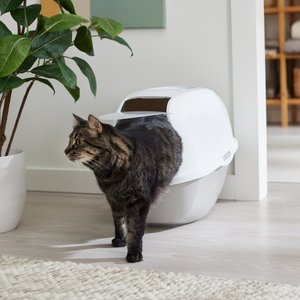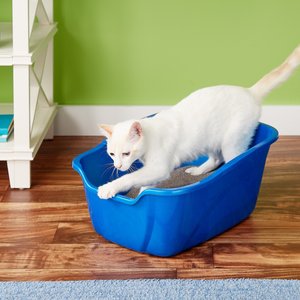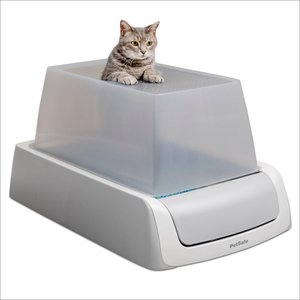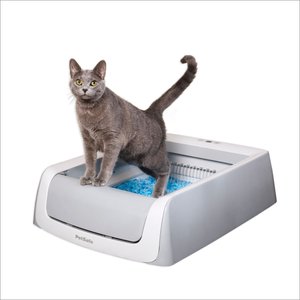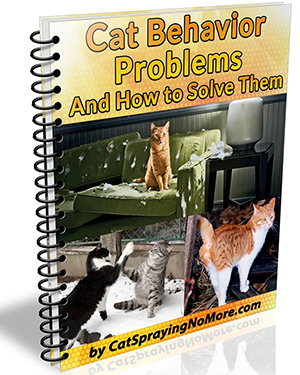Daily Archives: March 12, 2023
Covered vs Uncovered Litter Boxes
Cats are adorable and lovely creatures, but their litter boxes can be a nuisance if not taken care of properly. A litter box is an essential item for any cat owner, but there are various types of litter boxes available in the market. Among these types, the covered and uncovered litter boxes are the most popular.
A covered litter box, as the name suggests, has a cover on top of the box, while an uncovered litter box is an open box without a cover. Both have their advantages and disadvantages, and choosing the right one can be challenging for pet owners. In this article, we will discuss the differences between covered and uncovered cat litter boxes and help you make an informed decision.
Covered Cat Litter Boxes
Covered cat litter boxes are enclosed boxes that have a lid or cover on top of the box. These types of litter boxes are designed to provide privacy to cats and minimize the spread of litter and odor around the house. They come in different sizes, shapes, and styles, and some even have a built-in filter to control odor.
Advantages of Covered Cat Litter Boxes
Minimizes Litter Tracking: Covered cat litter boxes can minimize litter tracking around the house. The cover prevents litter from scattering outside the box when cats dig and cover their waste.
Reduces Odor: Covered litter boxes come with a cover that traps odor inside the box. This can help to reduce the smell of cat waste and keep the area around the litter box smelling fresh.
Provides Privacy: Covered cat litter boxes offer privacy to cats, which can be beneficial for shy cats or those that prefer to use the litter box in peace.
Disadvantages of Covered Cat Litter Boxes
Hard to Clean: Covered cat litter boxes are often difficult to clean due to their design. The cover can make it difficult to scoop out waste, and it can be challenging to reach all the corners of the box.
Traps Odor: While covered litter boxes do reduce odor, they can also trap odors inside the box, making it difficult to remove the smell even after cleaning.
Not Suitable for Large Cats: Covered cat litter boxes may not be suitable for large cats or cats with mobility issues. The entrance may be too small for some cats to enter and exit comfortably, and the cover can make it difficult for cats with limited mobility to use the box.
Uncovered Cat Litter Boxes
Uncovered cat litter boxes are open boxes without a cover or lid. They are the most common type of litter box and are available in various sizes and styles.
Advantages of Uncovered Cat Litter Boxes
Easy to Clean: Uncovered cat litter boxes are easy to clean because they are open and accessible. It is easy to scoop out waste and clean all corners of the box.
Suitable for Large Cats: Uncovered cat litter boxes are suitable for larger cats as they have ample space for the cat to enter and exit the box comfortably.
Less Expensive: Uncovered cat litter boxes are generally less expensive than covered litter boxes. This makes them a more cost-effective option for cat owners.
Disadvantages of Uncovered Cat Litter Boxes
Litter Tracking: Uncovered cat litter boxes can cause litter tracking around the house. Cats can scatter litter outside the box when digging and covering their waste.
Odor Spread: Uncovered litter boxes can spread odor around the house as there is no cover to contain the smell.
Less Privacy: Uncovered cat litter boxes provide less privacy to cats as they are open and exposed. This can be an issue for shy cats or those that prefer to use the litter box in peace.
Automatic or easy to clean litter boxes
Note there are covered and uncovered litter boxes that requires less work like scooping out the litter.
Which Litter Box You Choose?
Choosing between a covered and uncovered cat litter box depends on your cat’s personality and your living situation. I would suggest having both to find out which one your cat likes.
This content may contain links to products, software and services. Please assume all such links are affiliate links which may result in my earning commissions and fees.
Is Your Cat Marking Your Home?
The smell of ordinary cat urine is strong enough, but when a cat spray marks, the odor will be even more overpowering and unpleasant. Unlike urination, which does leave a message for other cats to an extent, spray marking is more like a billboard with lights. The whole reason for marking is to inform other cats of a particular cat’s presence. And, while urine is simply the waste that has been filtered out by the kidneys, marking includes other bodily chemicals with information about sex, health, and undoubtedly other important cat messages.
Unlike normal urination, which is made by the cat squatting down, spray marking is done when the cat is standing and the deposit will be made on a vertical surface such as a door frame or the front of a sofa or chair. The cat will back up to the chosen area, and wiggle its tail as it delivers the spray behind it. The volume of the spray is much less than is produced when the cat urinates.
Stopping Spray Marking
While some female cats will spray mark, the main culprits are intact males. Spray marking is used not only to deliver some information about the sprayer, but also to mark territory, which is especially important in the wild where hunting grounds must be protected. This behavior is also much more common in homes where there are several cats, and an order of dominance constantly needs to be established. However, there are steps you can take to minimize the chances of spray marking.
- If you have a multi-cat household, provide several litter boxes, rather than just one, there should be a box for each cat, and a spare.
- All litter boxes should be kept completely clean. Feces and clumps of urine-soaked litter should be removed daily and the litter changed completely once a week.
- Block off the area being spray marked. The cat will usually return to the same spot periodically to ‘renew’ the fragrance, so denying access can help to eliminate the problem.
- Use an enzyme cleaner to remove the spray. You may have to apply it several times to remove all the smell.
- Neutering both toms and tabbies can help to stop spraying behavior.
Stress can also trigger spray marking, so address any issues that may be making your cat, or cats, nervous.
Learn how to stop your cat from marking your home check out Cat Spraying No More
Why do cat’s mark your territory?
Marking territory with urine is your cat’s way of dealing with stress. They feel anxious and are trying to relieve their anxiety by staking out their boundaries. Leaving their urine scent is the most emphatic way to say, “I’m stressed.” tract problems don’t clear up by themselves and require urgent attention. With more information found from the ASCPA and other online professional services
How to Feed a cat
Feeding a cat might seem like a simple task, but many cat owners make common mistakes that can harm their feline companions’ health. As a result, it’s crucial to understand the proper feeding practices to keep your cat healthy and happy. In this article, we’ll take a look at some of the common mistakes that cat owners make when feeding their cats and how to avoid them.
Overfeeding your cat
Overfeeding is a common mistake that many cat owners make, and it can lead to obesity, which is a significant health concern for cats. Obesity increases the risk of various health issues, including diabetes, heart disease, and joint problems. Therefore, it’s essential to feed your cat the appropriate amount of food according to its age, size, and activity level.
The amount of food that a cat requires varies based on its age and activity level. Generally, adult cats require about 20 to 30 calories per pound of body weight per day. However, it’s crucial to note that this can vary based on factors such as whether the cat is spayed or neutered, its activity level, and its age. Therefore, it’s important to consult with your veterinarian to determine the appropriate amount of food to feed your cat.
Feeding a diet that is inappropriate for cats
Cats are obligate carnivores, meaning that they require a diet high in protein and low in carbohydrates. Many cat owners feed their cats diets that are inappropriate for them, such as diets high in carbohydrates, grains, and fillers. These diets can lead to various health issues, including obesity, diabetes, and digestive issues.
Therefore, it’s crucial to choose a high-quality cat food that meets the nutritional requirements of cats. Look for a cat food that contains high-quality animal protein as the primary ingredient and is low in carbohydrates and fillers. Additionally, avoid feeding your cat table scraps, as these can upset their digestive system and lead to obesity.
Feeding a one-size-fits-all diet
Not all cats are created equal, and their nutritional requirements vary based on factors such as their age, activity level, and health condition. Therefore, it’s crucial to choose a diet that meets the specific nutritional requirements of your cat.
For example, kittens require a diet that is higher in calories and protein than adult cats. Similarly, older cats may require a diet that is lower in calories and higher in protein to maintain their muscle mass.
If your cat has a health condition, such as diabetes or kidney disease, it’s crucial to choose a diet that meets their specific nutritional requirements. Consult with your veterinarian to determine the appropriate diet for your cat’s specific health condition.
Feeding too many treats
While treats can be a great way to bond with your cat and reward them for good behavior, feeding too many treats can lead to obesity and other health issues. Therefore, it’s crucial to limit the number of treats that you feed your cat and choose healthy, low-calorie options.
Additionally, avoid feeding your cat human foods as treats, as these can be high in calories, fat, and sugar and can lead to digestive issues.
Feeding on an irregular schedule
Cats thrive on routine, and feeding them on an irregular schedule can lead to anxiety, obesity, and other health issues. Therefore, it’s crucial to establish a regular feeding schedule and stick to it.
Most cats prefer to be fed multiple small meals throughout the day, rather than one or two large meals. Therefore, consider feeding your cat small meals throughout the day, rather than one or two large meals.
Additionally, avoid free-feeding your cat, as this can lead to overeating and obesity. Instead, measure out the appropriate amount of food for each meal and feed your cat at regular intervals throughout the day.
Not providing enough water
Cats require a lot of water to stay healthy, and not providing enough water can lead to dehydration and other health issues. Therefore, it’s crucial to ensure that your cat has access to clean, fresh water at all times.
Some cats prefer drinking from a fountain or running water source, so consider investing in a cat water fountain to encourage your cat to drink more water. Additionally, consider feeding your cat wet food, which has a higher moisture content than dry food and can help keep your cat hydrated.
Feeding the wrong type of food for their dental health
Dental health is an important aspect of a cat’s overall health, and feeding the wrong type of food can lead to dental issues such as tartar buildup and gum disease. Therefore, it’s important to choose a cat food that promotes good dental health.
Dry cat food can be beneficial for dental health, as the crunchy texture can help scrape away tartar and plaque buildup. However, some cats may have difficulty chewing dry food, especially if they have dental issues. In this case, wet food or a combination of wet and dry food may be a better option.
Additionally, consider providing your cat with dental treats or toys that promote good dental health and encourage them to chew and clean their teeth.
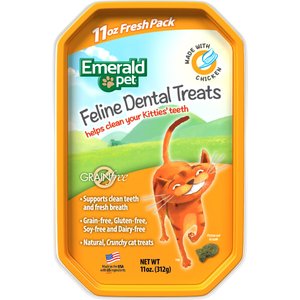 A great dental treat for your cat is Emerald Pet Feline Dental Treats would be nice for your cat. My cat really likes these.
A great dental treat for your cat is Emerald Pet Feline Dental Treats would be nice for your cat. My cat really likes these.
Changing the cat’s diet too quickly
Changing your cat’s diet too quickly can lead to digestive issues such as vomiting and diarrhea. Therefore, it’s crucial to introduce new foods slowly and gradually.
Start by mixing a small amount of the new food with your cat’s current food and gradually increase the amount of new food over a period of 7-10 days. This allows your cat’s digestive system to adjust to the new food gradually, reducing the risk of digestive issues.
Additionally, if your cat has a sensitive stomach or digestive issues, consider choosing a cat food that is designed specifically for cats with digestive issues or consult with your veterinarian for recommendations.
Not considering their age and health status
As cats age, their nutritional requirements change, and they may require a different diet than they did when they were younger. Additionally, cats with health conditions such as diabetes or kidney disease may require a specific diet to manage their condition.
Therefore, it’s crucial to consider your cat’s age and health status when choosing a diet and feeding them. Consult with your veterinarian to determine the appropriate diet for your cat’s age and health status and make any necessary adjustments as they age or their health status changes.
In conclusion, feeding a cat may seem like a simple task, but there are many common mistakes that cat owners make that can harm their feline companions’ health. By avoiding these common mistakes and following the proper feeding practices, you can ensure that your cat stays healthy and happy for years to come. Consult with your veterinarian for specific recommendations for your cat’s unique needs and always prioritize their health and well-being.
Learn more about feeding your cat by Cornell University
Review: The Cat Language Bible by Jonas Jurgella
The Cat Language Bible could this guide really be the key to understanding your cat through true-to-word language?
Forgive me for being a bad parent, but sometimes I just can’t understand what Scruffles is SAYING between all the meows and purrs.
I guess you could call him a big yapper with the shrewd, “let nothing truly be told” face of a master poker player.
Frankly he doesn’t even need the poker face when he just says the same 2 sounds. Meow. Purrrrrr. How could anyone possibly make sense of that?
Well, you’d be surprised.
As Scruffle’s caretaker and owner, our language miscommunications can cause friction at times. While I’m trying to figure out whether he’s hungry or tired, angry or just energetic, he’s off in his own world not making anything easier for me.
The Cat Language Bible™ immediately stood out to me as a way to finally break the code with Scruffles and have an honest, one-on-one, human-to-cat dialogue.
That was, if the marketing lived up to the program’s description.
This course brands itself as a way to understand what your cat is trying to communicate to you – through body language as well as actual cat sounds.
Being a feline with more secrets than he has lives, the prospect of knowing what my cat was thinking, feeling, and sometimes plotting against me was immensely interesting.
What can I say, I’m a bit of an eavesdropper, and I wanted to know what Scruffles actually thought about me as he made efforts to hide, stalk, or occasionally pounce me in my sleep!
Body Language by your cat
What I really like about this guide is that it’s not pure text. They show multiple shots of cats exhibiting different signs based on their behavior. For a book about language including the bodily variety, I think this is essential, and they delivered more than just a basic text description by actually showing cats in various emotional and communicative states.
When you think about it, all animals have certain reflexes that they adapt based on their environment. When scared, they recoil, just like humans do. When excited or fearful, they have different body mechanics to suit each situation.
The reason that you and me struggle with this is because there are slight variations that are hard for non-felines to detect. Just like when a human being furrows his eyebrow to show confusion or disdain, you really need to understand the subtleties that are on display when you look at a cat’s body as well.
The Cat Language Bible™ shows that critical nuance of behavior. It goes to that extra depth to really help you understand and decipher the body language of cats.
Verbal communication by your cat
Yes, meow, screech, and a purrr are obviously different in meaning. I think of them as the “primary cat words.”
But unlike human beings, cats focus more on tone to convey different ideas and emotions than humans do. And here again The Cat Language Bible™ breaks it down, highlighting differences between screeching tones and soft tones, as well as low, high, and medium pitches.
It’s worth noting that every cat is different and you need to establish a base for what is loud versus soft with your own feline. Even with Scruffles being as low-key as he is, I didn’t find this to be an issue at all.
Overall rating of “The Cat Language Bible”
Are you a cat owner? Do you want to understand your cat better? Then get The Cat Language Bible™. It teaches exactly what it says: the language of cat.
I don’t know of any other guide that goes into such depth with the picture examples, breakdowns of pitch and tone variations, and lessons on cat behaviors and emotional states.
This guide also changed my understanding of Scruffle’s true intelligence. It turns out that house cats have evolved to speak to us in way that no other felines really have. Their language skills, although not quite matching our own, are highly sophisticated and nuanced.
The Cat Language Bible™ is an essential guide then, for understanding how cats think, show emotion, and even manipulate us at times based on their language, both in body and voice.
It’s time to talk cat. Watch author Jonas Jurgella’s FREE video presentation here: Click Here
What an explosive new “Japanese Cat Communication” study means for cat owners looking to bond with their cats
In case you’re not a follower of all things cat research, I’m happy to present a breakthrough study on the matter…
This new study has showed us something fascinating about how animals think and comprehend us.
The results basically indicated that felines have an astounding ability to understand our words. They can understand human language!
Japanese researchers in Tokyo uncovered this special trait, which separates domestic house cats from all other large, wild felines (tigers, lions and so forth). It turns out the smallest and cutest ones of them all are the most verbally sophisticated. It appears house cats have actually evolved to understand us as part of their domestication.
- They understand us by our pitch. They can tell if we’re angry or if we want to hug them.
- They can understand us by our words. They know their name, our name, and a host of other titles we assign to things around the house or activities.
- And most fascinating of all, they’ve evolved to mirror us. In the wild, cats prefer to be pin drop quiet. They are hunters that catch prey by closing distance through silence and camouflage followed by a brief sprint. This is why when cats communicate to each other, the primary device is their body, not their vocals.
And yet with you and me, cats constantly break this rule. Why though?
Again, it goes back to domestication. Watching humans communicate to each other through voice, cats have learned to mirror us.
The fascinating thing about this brain-level chance is that cats have developed a sort of language of their own. In between the meows, purrs, and hisses is a genuine language built on tone and word length.
Yes, it can be deciphered. In fact it already has. This is what the Cat Language Bible by Jonas Jurgella is in a nutshell. It is years of research into the field of human to feline communication, condensed and compressed into a simple guide that anyone can pick up and use on-the-fly with their own cat.
- Use it to interpret cat sounds as they’re happening. Now you can finally understand if your cat is sick or just energetic.
- Read his thoughts by reading his body. It’s tough to know when your cat wants to be left alone versus when he’s genuinely sad and feeling secluded. Now you can tell using some verbal and nonverbal giveaways common to all felines.
- Speak to him in a way that he can understand. Cats may not have the advanced language capability that humans do — yet they make sounds that can also be understood and interpreted by us.
- Would you like to actually say something to your cat that he could really understand on his own terms? The Cat Language Bible™ will tell you how to do it.
See the FREE video here for more information: Click Here
In my opinion as a cat owner, this is a must-have in any animal household. Pick it up, and see how much closer a connection you can build with your own feline through the power of direct human to cat conversation.
